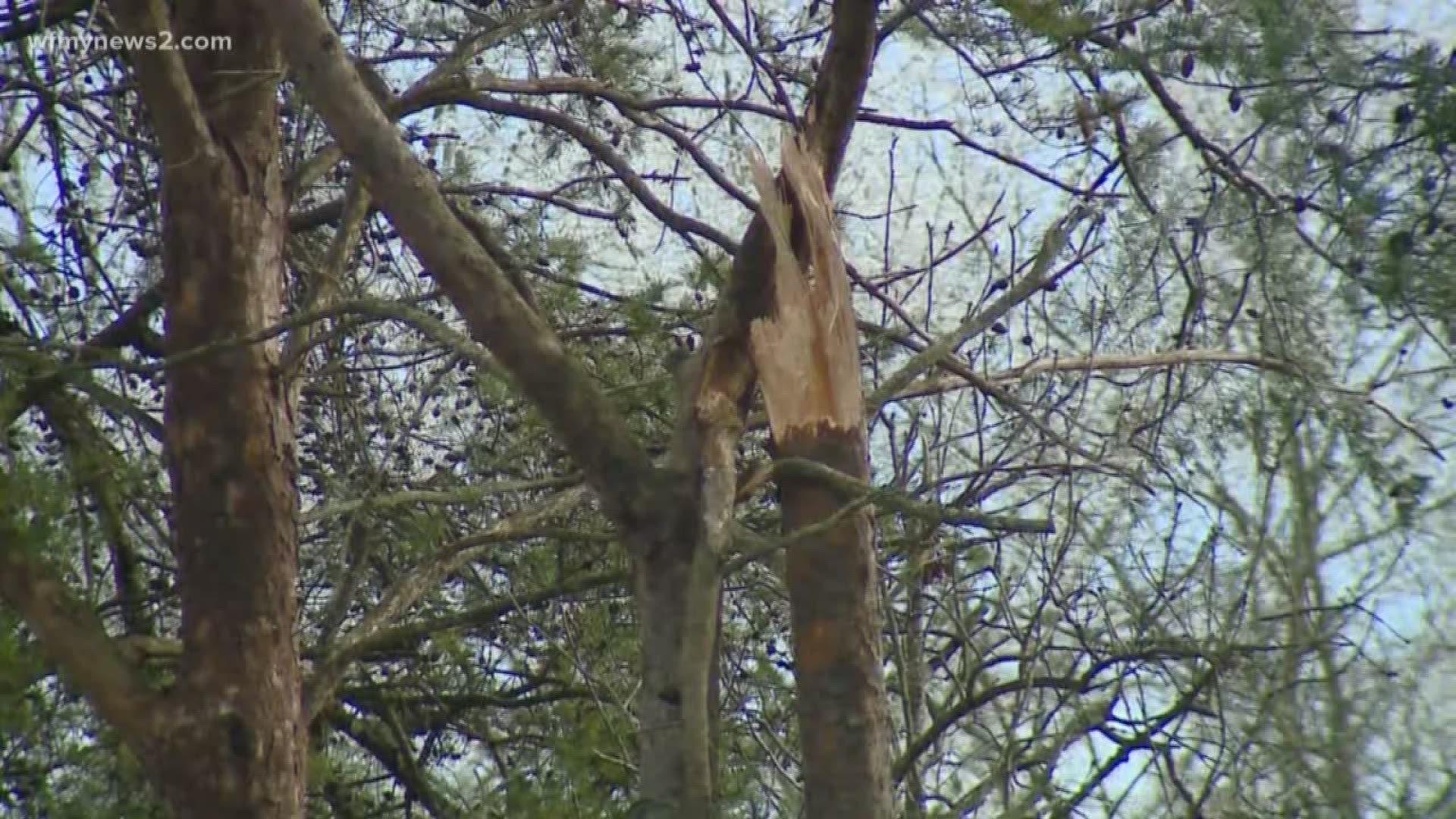GREENSBORO, N.C. — The ice over the weekend caused problems throughout the Piedmont Triad when it comes to downed trees and power outages. As crews work to restore power, people may be left to pick up a mess made by a fallen tree.
The Insurance Information Institute says that no matter where a tree came from, if it hit your house, your homeowners insurance will cover the cost. That means if a tree blew in from around the block or leaned over from your neighbor's yard. You just need to file a damage claim with your insurer.
If a falling tree hits your car, you can also file a claim with your auto insurance. The key works here are "comprehensive coverage." That covers any vehicle damage besides collisions, including theft, hail and falling trees. According to All State, comprehensive coverage is sometimes optional if you own your vehicle so check with your provider to see if you have it. If you're leasing or financing a car, your lender might make it mandatory.
Scott Saintsing with Outdoor Exposure tree service says you can do a lot to prevent a tree falling on your home. Before the next storm, check your yard out. Saintsing says there are plenty of signs that could tip you off to an unhealthy tree:
1. Age. If a tree is older and bigger, it could be more at risk for falling.
2. Bark. Is the bark discolored? Or is it easy to peel off - like charcoal? That shouldn't happen. Healthy bark should be tough to pull off the tree.
3. Leaves. A tree could be dying if the leaves are late to grow in the season or if leaves don't grow at all. If leaves or needles also start to appear discolored out of season, that could also be a sign the tree is unhealthy.
4. No sap. Is the tree dried out? Sap in the trees allow it to bend and move with wind. If all the sap is dried out, the tree is more likely to snap.
5. Bugs. Saintsing says bugs burrowing in trees mean it's decaying.
6. Rain/Water. If water pools around the tree during storms, it could lead to root rot.
7. Limbs. If lots of limbs are falling off, it could signal parts of the tree are dying off.
Saintsing says some of these signs might be hard to see for the average homeowner. He recommends getting a tree inspection by an arborist at least once a year. Many companies, including his, will do inspections for free.
Last year, Saintsing and his crew were working on a downed oak tree in Winston-Salem. Fortunately, the homeowners weren't home when it happened, but it still caused some damage. The tree came from a neighbors yard. Saintsing says even if the tree isn't in your yard, there are still ways to ensure it's safe.
"In North Carolina it's all about the property line," he explains. "But in this instance, a lot of this tree was actually over the property line coming over to the neighbor's property so technically speaking, this homeowner had the right to trim or treat anything that's on her property."
If you have an issue with your neighbor's tree, Saintsing recommends talking to them. Most of the time he suspects the neighbor will be okay with getting the tree checked out just in case.

